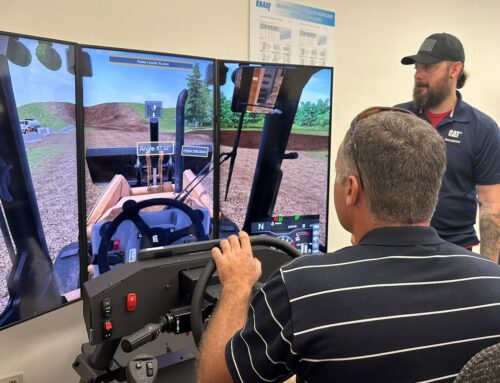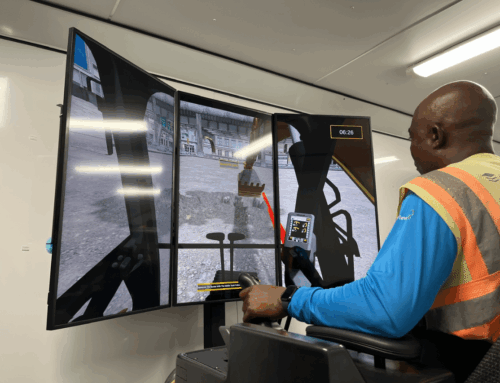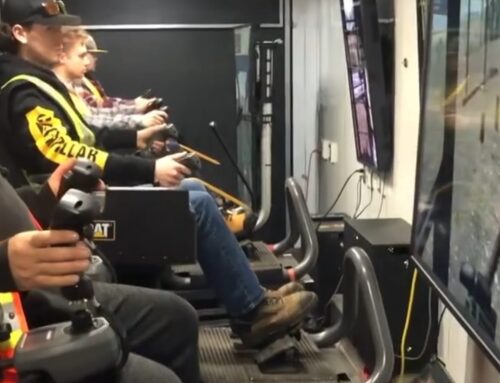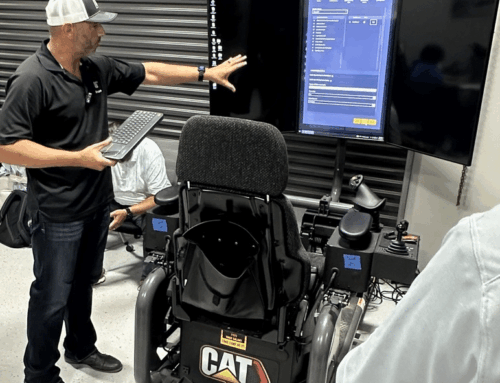Michael Jordan. Serena Williams. Tom Brady. Simone Biles. Your mileage may vary, but most experts consider these athletes to be the GOAT — greatest of all time — in their respective sports. How’d they earn that title? Natural talent, for sure, but also lots of practice and commitment.
Given the ongoing labor shortage in construction, you may think your chances of finding GOAT-level equipment operators are slim to none. Good news: There are some simple steps you can take to turn good performers into great ones.
- Don’t underestimate seat time. Michael Jordan practiced shooting free throws until the day he retired. Equipment operators need practice time, too. Give them the opportunity to get comfortable in their “office” — to figure out what a machine can and cannot do. This is true for new operators as well as experienced operators getting used to a new piece of equipment or onboard technology. Don’t want to pull a machine from your fleet or jobsite for training? Leverage Cat Simulators to train operators while saving fuel and wear in a controlled environment.
- Tap into digital resources. Send an operator home with a hard copy of an operation and maintenance manual and you’ll likely put them to sleep. Good thing more and more machines today incorporate that information into the in-cab monitor. That makes it easy for operators to get answers to specific questions on the fly. And features like Operator ID let individuals set and store operating preferences, so they can just jump in the cab, push a button and start working efficiently.
- Take advantage of assist features. Remember the days before cruise control or power steering? You could still drive a car, but now it’s so much simpler. Same with today’s equipment. Lift Assist and Grade Assist for excavators, Slope Assist for dozers and Stability Assist for articulated trucks are just a few examples of technologies available to help operators get work done faster, safer and more accurately.
- Bring in the experts. With so many new tools and technologies on modern equipment, it’s asking a lot of operators to become proficient on day one. They may need someone to show them all the different features — where they are, how to turn them on, when it makes sense to use them and when it doesn’t. Get in touch with your equipment dealer and ask them to send a demo operator or trainer to your site for a day.
- Know their talents. You’re going to have all kinds of personalities on the job site, and that’s a good thing. It’s up to you as a manager to understand your operators’ strengths. For example, good finish blade hands tend to have more patience and finesse than bulk excavator operators, who may take a more aggressive approach. When you put individuals in a position to excel, they perform better.
- Encourage them to communicate. There may only be one person in the cab, but equipment operation is a team sport. When every operator knows what every other operator is up to, the work gets done more accurately and efficiently. It’s a good idea to get your crew together at the beginning or end of each day and talk about the plan for the next shift. It only takes a few minutes to get everyone on the same page, and the result is a better end product.
GOAT-level performance is possible — it just takes some time and commitment from both you and your operators. These quick wins are a great starting point. For more advice on turning operators from good to great, tune into this episode of The Contractor’s Best Friend podcast.
Original Article by: Lonnie Fritz, Caterpillar | For Construction Pros | May 22, 2022 | https://www.forconstructionpros.com/business/labor-workforce-development/article/22223748/caterpillar-cat-from-good-to-goat-quick-wins-for-operators






